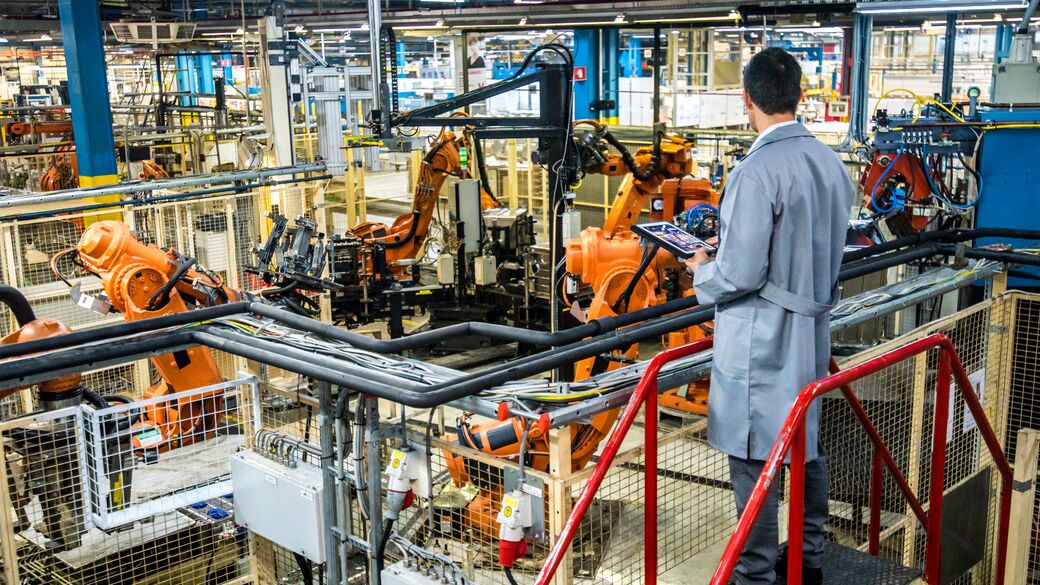Table of Contents
Supply chain agility has been described as a cat chasing a laser pointer. It's all about being able to quickly adjust your strategy to keep pace with—if not predict—rapidly changing conditions.
Agile companies—like cats chasing laser points—can keep up. No matter how fast, surprising, or erratic the changes in market conditions.
Businesses with supply chain agility cannot only navigate and adapt to these changes with ease, but these challenges present new opportunities for them to outshine the competition and increase their bottom line.
High rates of inflation and Covid-19 have been a sobering wake-up call, as these disruptors have hindered even the nimblest of business operations. But no matter how flexible and sophisticated your processes are, there's room for every company within every industry to improve continuously.
In terms of movers, makers, and sellers (distributors, manufacturers, and retailers), this means:
- Building and strengthening relationships with suppliers.
- Creating a flexible workforce that can adapt to challenges and disruptions.
- Contingency planning: preparing for the unexpected, like inflation, recession, pandemics, or natural disasters.
- Continual investment in technology: the right software and Internet of Things (IoT) technology.
This article will discuss these topics in more detail. By the end of the article, you should be able to articulate what supply chain agility is and why it's important. You should also be able to identify ways your business can build cat-like reflexes and resilience to continually keep pace with changing market forces.
What is Supply Chain Agility?
Supply chain agility refers to a company's ability to quickly and agilely respond to disruptive changes to its supply chain. This can include:
- Increases or decreases in consumer demand.
- Raw material shortages.
- Labor price hikes.
- Shipping or distribution bottlenecks.
- Sanctions, embargoes, trade wars, or unfavorable regulations.
- Natural disasters, wars, or pandemics.
Clearly, there are a number of factors outside of your company's control that can wreak havoc.
But you can prepare; the more agile or nimble your supply chain, the better you can quickly and effectively adapt. There are key things within your control that your business can do. In the previous section, we discussed the importance of strong relationships with your suppliers and building a flexible workforce. Other essential elements include:
- Optimize your logistics operations—continually. This means having the optimal inventory levels, the right transportation partners, and the best warehouses and warehouse management.
- Use data to make decisions. Real-time data can track performance, identify trends, point out problems before they're problems, and help you make better decisions. When stakeholders work off the same data, decision-making is less political and more effective.
- Measure your results. Continually monitor and track your performance, making adjustments to processes and/or forecasts and budgeting as needed.
- Embrace innovation. Build a work culture open to new ideas and new technologies. You want employees who thrive on change.
- Implement and use the right technology. Integrated enterprise resource planning (ERP) software, cloud-based technologies, and handheld, smart devices can help you continually monitor and optimize processes across all areas of the supply chain. Fully integrated systems will give you real-time insights and responsiveness that legacy systems and on-premise software can't match.
Why is Supply Chain Agility Important for eCommerce?
Supply chain agility is crucially important for eCommerce because it enables businesses in this sector to quickly and efficiently adapt to changes in market conditions and customer demand.
Agile supply chain management enables eCommerce businesses to increase sales, reduce costs, and improve customer satisfaction.
Meet Demand
An agile supply chain excels at meeting customer demand. For eCommerce, this primarily relates to fast, affordable shipping—even with fluctuation in order size for package dimensions or quantity.
Agile ways to meet demand include:
- Storing inventory in multiple locations, including distribution centers and bonded warehouses.
- Working with multiple suppliers.
- Working with a variety of different shipping carriers.
- Using advanced automation and technology.
Streamline Processes
Supply chain agility can help your company streamline processes in numerous ways.
- Improved inventory management so your business can manage the optimal levels of inventory: as little as possible to reduce overhead costs, but enough to satisfy sales demand.
- Rapid order fulfillment improves customer satisfaction and lowers the risk of canceled orders or lost sales.
- Reduced costs. By fulfilling orders more quickly and keeping less inventory on hand, businesses can reduce inventory carrying costs, warehouse storage costs, and transportation costs.
- Improved customer service. Agile supply chains can better respond to customer demand for fast, affordable shipping—even with rapidly fluctuating shifts in order and shipping volumes.
Reduce Costs
Supply chain agility can reduce costs for your eCommerce business in a number of ways.
- Reduced inventory carrying costs. Less inventory is carried, reducing storage and insurance costs. It also lowers the risk of inventory obsolescence.
- Reduced transportation costs. Businesses can manage the transportation of goods in the most cost-effective way possible by working with multiple carriers, negotiating discounts, or consolidating shipments.
- Reduced warehousing costs. This can be achieved by reducing the amount of warehouse storage space that's needed, by using multiple storage facilities or by outsourcing warehouse operations.
- Reduced waste. An agile supply chain can help your business reduce its overall waste in a number of ways: decreased overstock, improved returns management, and salvaging and recycling materials.
Improved Accuracy
Investing in agility can help your business improve its accuracy, thereby reducing errors and business costs.
- Real-time data enables you to better keep tabs on inventory and identify and address any potential under- or overstock situations.
- Automated fulfillment systems can reduce the risk of human error and ensure orders are processed more quickly and accurately.
- Back-up plans for shipping. There's a contingency plan in place for any disruptions in shipping when you have primary, secondary, and tertiary shipping carriers lined up. This ensures orders are always delivered on time.
Increased Customer Satisfaction
A more agile supply chain will help your eCommerce business improve customer satisfaction.
- Faster shipping times: shipping orders more quickly by using more carriers and a wider network of warehouses and distribution hubs.
- Greater accuracy: customers are more likely to receive the right order: SKU, quantity, and condition.
- Increased selection: with improved operations and reduced inventory, businesses can ensure they carry the shifting assortment of products that customers want, including seasonal goods or colors.
- Improved customer service: with a more efficiently run supply chain, businesses can allocate resources toward offering even faster, better customer service.
What is an Agile Supply Chain Example?
It's difficult to discuss agile supply chains without discussing the king of logistics: Amazon. Amazon boasts a vast network of warehouses, distribution centers, and storage lockers around the globe.
This enables the retail giant to quickly ship packages to customers no matter where they are located, using planes, boats, and trucks. Amazon has ventured into air transportation for final-mile delivery, via drones, but government safety regulators have curtailed Amazon's drone delivery expansion efforts for now.
Amazon has achieved its supply chain agility by:
- Investing heavily in technology and infrastructure.
- A vast network of 175 fulfillment centers and over 100 sortation centers around the globe, all equipped with state-of-the-art technology including robots and AI.
- Superb data analytics to track customer behavior, expertly predict demand, and continually optimize its supply chain in response to changing trends. Amazon is famous for knowing what customers want before even their customers know it themselves.
- Partnerships: Amazon partners with numerous businesses to help manage its supply chain, including transportation companies and third-party logistic providers.
- Culture: Agility and innovation are stamped in the DNA of Amazon. Employees thrive on change and technology, whereas other companies may have change-resistant workers who want to cling to legacy systems and processes.
This supremely agile supply chain has enabled Amazon to offer lightning-fast shipping (that customers now demand from other retailers), ultra-low prices, and an unrivaled selection of goods within one eCommerce site.
What Makes a Supply Chain Agile?
Many factors go into making a supply chain agile, with four of the key components being:
- Flexibility
- Responsiveness
- Decisiveness
- Resilience
Flexibility
Agile supply chains exemplify flexibility by:
- Using a variety of suppliers.
- Holding minimal levels of inventory and using best-in-class inventory planning.
- Using technology for improved forecasting, monitoring, and continual process optimization.
- Preparedness; agile supply chains are prepared for disruptions of all kinds, from government embargoes to tariff wars to raw material shortages.
Responsiveness
Many factors go into an agile supply chain's responsiveness, including:
- Transparency: All stakeholders have access to the same real-time data about inventory, production schedules, and other vital metrics. This enables better, faster decision-making.
- Collaboration: All stakeholders can work together to achieve common goals. Working off shared information, they can better coordinate activities and resolve any conflicts.
- Technology: Agile supply chains use advanced technology purposefully to increase speed, access to real-time data, and overall efficiency.
Decisiveness
An agile supply chain means a decisive business culture.
- Leadership: Decisive leadership and supply chain agility go hand in hand. Leadership must be able to make quick, decisive decisions in response to changing conditions.
- Culture: A culture of empowerment must exist where supply chain managers and other employees are empowered to take immediate action where needed, without waiting on approvals from senior leaders.
- Processes: There are processes (and subprocesses) in place to make decisions in the event of disruptions. These processes are direct, efficient, and easy to follow. These processes are also regularly reviewed and updated to insurance relevancy and efficacy.
Flexibility, responsiveness, and decisiveness work together to create a resilient and agile supply chain.
How Do You Achieve Agility in Supply Chain?
There are many software and hardware tools that can be leveraged to achieve and continually improve supply chain agility.
- Demand Forecasting 3PL Software
- Inventory Replenishment
- Efficient Distributions
Demand Forecasting 3PL Software
Demand forecasting 3PL software is a kind of software businesses use to forecast demand for their products and services. There are different kinds of 3PL software available, but general components may include:
- Data collection from a variety of sources, including sales data, customer surveys, and inventory reports.
- Data analysis and visualization to analyze demand patterns and identify trends.
- Forecasting. 3PL software can take in a multitude of data inputs to forecast future demands.
- Reporting capabilities. 3PL software can provide excellent forecasts, summaries, and reports to guide human decision-making.
3PL software can help your businesses reduce costs, increase sales, and improve overall profitability.
Inventory Replenishment
3PL software can optimize inventory replenishment by continually monitoring real-time data, identifying when inventory runs low (and if it needs to be replenished), and determining how much inventory to reorder.
This software can also help businesses manage suppliers, which includes: finding new suppliers, negotiating costs, and tracking orders.
Efficient Distributions
3PL software has major benefits in terms of distribution efficiency.
- Real-time visibility into supply chains, including inventory levels and delivery times.
- Collaboration tools for communication among businesses, suppliers, carriers, and key supply chain partners for improved coordination and rapid decision-making.
- Continuous reporting to track metrics and identify areas for improvement.
Final Thoughts on Supply Chain Agility
Having an agile supply chain is critical for a business to be competitive in the world of Amazon and AI.
An agile supply chain can help businesses reduce costs, optimize inventory levels, increase shipping speeds, and improve overall customer satisfaction. Additionally, agile supply chains can react quickly and adeptly to changing market forces and to consumer demand.
To bring it back to our metaphor about the cat chasing the laser pointer, that red beam of light is a continually moving target. You can't actually catch "it," but you can get better at tracking it and anticipating where it will go next. It's not about catching the beam; it's about the pursuit — and getting quicker, smarter, and more adaptive.
Similarly, improving supply chain agility isn't a one-and-done activity. There isn't one fixed goal to reach; it's a continual process. The most agile supply chains are always improving, getting quicker and smarter. It's about getting more adaptive and proactive at the game when you’re up against market forces–instead of just being at their whim.
The right business processes can help your businesses build flexible teams who thrive in a culture of innovation and eagerly embrace the latest technologies.
Connect with a rep at Epicor about supply chain consulting and our state-of-the-art technology solutions.
Epicor has over 50 years of experience helping makers, movers, and sellers do business better, and we value gaining insights from businesses of all sizes.
Talk to us today to see how we can help you do business better.








